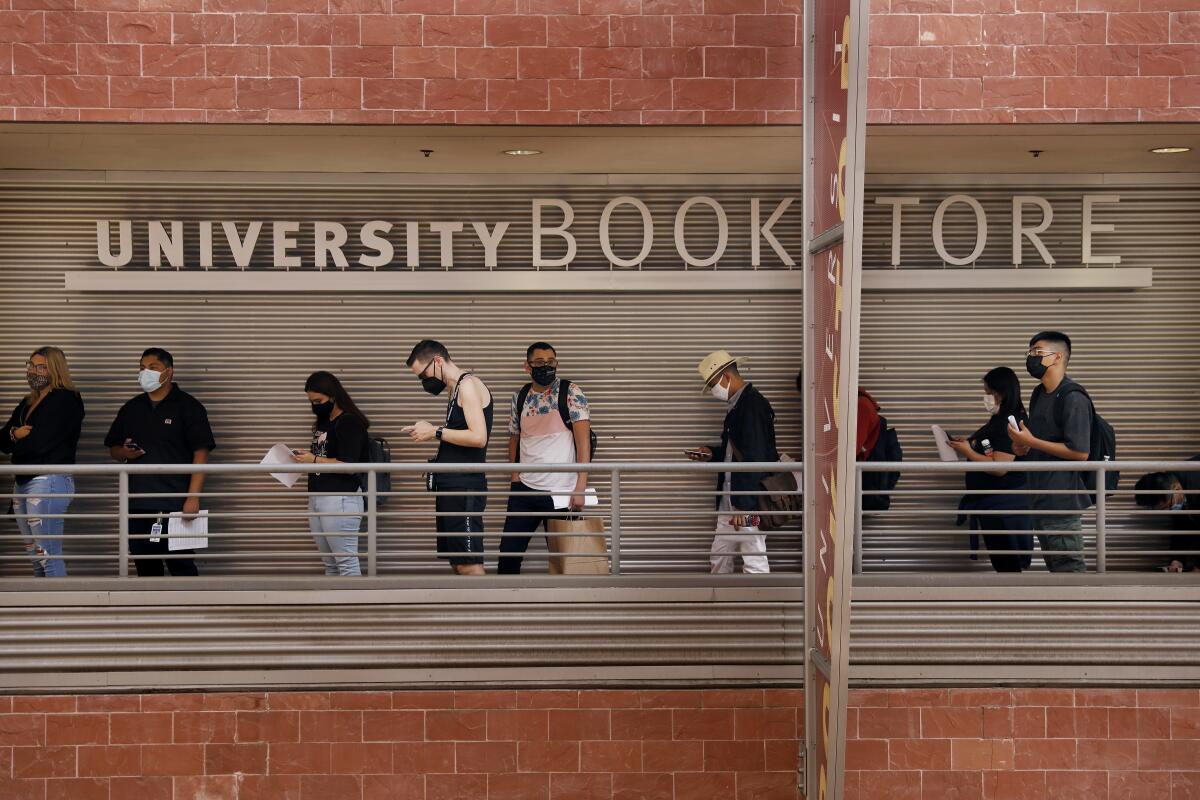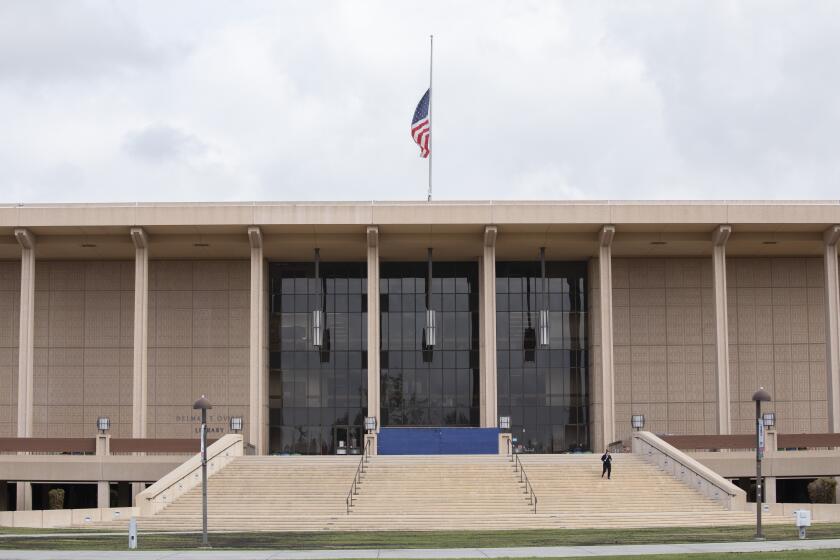Despite pandemic, Cal State graduation rates climbed, but equity gaps persist

- Share via
A record 132,167 students earned degrees from California State University during the 2020-21 academic year — including nearly 113,000 bachelor of arts degrees — but persistent gaps widened among historically underrepresented students, officials said Friday.
Graduation rates for first-time and transfer students have continued to increase since 2015, when the university system launched its important graduation initiative to improve sagging rates.
But the graduation equity gap for Pell Grant recipients — students with exceptional financial needs — and non-Pell Grant recipients grew slightly last year and now stands at 10.2%, up from 9.2%, Executive Vice Chancellor of Academic and Student Affairs Sylvia Alva said. The gap for Black, Native American and Latino students also grew and now stands at 12.4%, up from 10.5%.
“It would be simple to sit back and attribute inequities to the pandemic, to the economic uncertainty, the racial and social injustice across the nation — all of the turbulence of the last year. It would be simple, but it would be incomplete — incomplete because that explanation robs us of accountability,” Alva said.
Cal State Chancellor Joseph Castro said that a multilayered strategy will be key to “remove the barriers that stand in the way of historically marginalized students.”
The strategy will include a reenrollment campaign to bring underserved students back to campuses starting in the spring 2022 and the implementation of “digital degree planners,” a virtual road map to help students understand which courses are needed to graduate and correct mistakes if a dropped class could put them behind schedule.
“Data shows that students of color and first-generation students are more likely to receive Ds, Fs or withdrawals in their first year courses. For this reason, we aim to dramatically improve outcomes in those essential major pathway courses with the highest enrollments of underserved students,” Castro said.
Eight campuses account for 57% of the students of color who have left the Cal State system since fall 2019.
The graduation rate for first-time students at Cal State who graduate in four years is 33%; for first-time students who graduate in six years it’s 63%. The goal is to increase those rates to 40% and 70%, respectively, by 2025.
The fact that the graduation rate increased reflects the high number of students who were on track before the pandemic hit, Assistant Vice Chancellor Jeff Gold said. What happens to that rate in the next two to three years is a bigger question and will be linked to student enrollment trends during the pandemic.
Cal State has not yet released enrollment data for the fall 2021 semester. Last fall, the university system saw a record, but the number of first-time freshmen dropped significantly.
The hope is that the trajectory of increasing graduation rates continues, Gold said. But the more urgent need is closing equity gaps.
“I think it’s the hardest, most arduous challenge of our careers and for some of us, the calling of our lifetime,” he said.
Cal State recently announced that it will launch a technology hub to recruit future Latino students into tech fields and help close the equity gaps.
More to Read
Sign up for Essential California
The most important California stories and recommendations in your inbox every morning.
You may occasionally receive promotional content from the Los Angeles Times.












